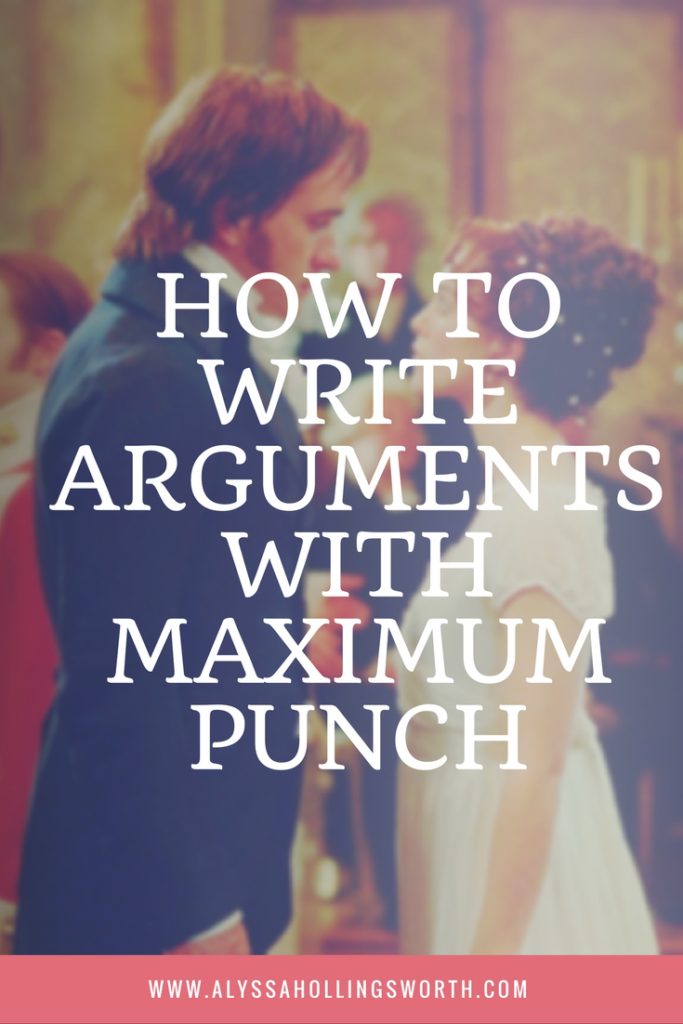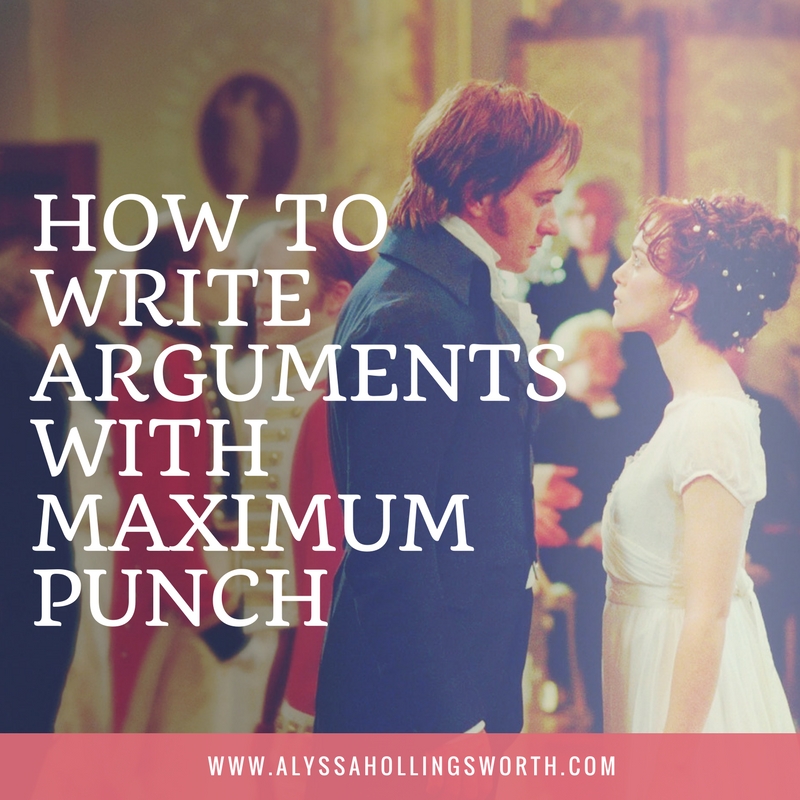Arguments are both exciting and difficult to write. It’s challenging to strike a balance, to make sure both sides are winning, and to avoid repetition. A well-written argument goes through plenty of revising before it can inflict Falcon-punch levels of pain.
Below are the steps I take to ensure my arguments as tight and terrible as possible.
1. Take sides.
Before you draft, ask yourself: What is this argument really about? What does Character A think it’s about? What does Character B think it’s about?
Spend some time getting into their heads. In a good argument scene, both sides are a little right and a little wrong. Make sure you identify with both characters before you draft. While you’re drafting, keep trying to identify with both sides.
After you draft, return to that question. Has the underlying argument changed? It’s totally all right if it has (because letting the argument go where it needs to go is important), but definitely make a note so you can keep it in mind during revision!
2. Distribute points.
I recommend printing your draft at this stage and getting out some colorful pens. Read it through again. Every time a character shoots off a zinger or in some way takes control of the argument, give them a point. When you’re done, tally it up to get the final score.
Depending on what you want, it may be fine if one character walks away with all the points. But normally the best option for optimal tension is if the points are very close, or even tied. This forces your reader to stay invested in the fight, because they aren’t sure who is going to win.
Return to your printed draft and note where one character isn’t scoring any points. See if you can work in a few zingers to even out the power.
3. Script it.
In the final manuscript, description and action is important, but in revision sometimes those can distract you from what’s really happening in the fight. This step is all about streamlining.
Make a new document and paste the argument into it. Remove everything but the straight dialogue.
Here’s an example:
Perl swallowed and said, “Thank you for coming. I wasn’t sure you would.”
“Yes, well.” He shrugged. “It’s over. I’m breaking the engagement, and then I’m going to the beach.”
A flash of heat went through Perl, and she could feel herself blushing even though there was no reason to. Of course, she had expected him to agree to breaking it off, once she told him it had to happen. Being on the receiving end had not been in her plan. It smarted, and she felt more irritated than she knew she should.
“That’s why I asked to meet you,” she said, curtly. “I’ll remind you that you can’t break the engagement. I can.”
“That is ridiculous.” He was all edges again in the mist, shoulders taut and straight even though his hands were still in his pockets. Even his voice was sharp and tight. “A betrothal involves two parties and they should have equal power. It’s completely stupid—”
“It doesn’t matter,” Perl cut him off with a wave, “because we want the same thing. That’s why I wanted to meet. But there’s a specific way it has to be done—”
“At the Wedding Ball, I know.”
Which turns into:
P: Thank you for coming. I wasn’t sure you would.
L: Yes, well. [Insert: I left some things unsaid that need saying. Namely: It’s over.](*) I’m breaking the engagement, and then I’m going to go to the beach(**).
P: That’s why I asked to meet you.(***) I’ll remind you that you can’t break the engagement. I can.
L: That is ridiculous. A betrothal involves two parties and they should have equal power. It’s completely stupid—
P: It doesn’t matter, because we want the same thing.That’s why I wanted to meet.(****) But there’s a specific way it has to be done—
L: At the Wedding Ball, I know.
 It is much easier to spot repetition when the argument is scripted (****). You can also easily see where the dialogue isn’t keeping up with the emotion (*). This is also a good way to make sure the argument stays on topic (**) and that your characters don’t miss very obvious openings for a verbal punch (***).
It is much easier to spot repetition when the argument is scripted (****). You can also easily see where the dialogue isn’t keeping up with the emotion (*). This is also a good way to make sure the argument stays on topic (**) and that your characters don’t miss very obvious openings for a verbal punch (***).
Return to your note from the first step. Is the argument still getting where it needs to go? The argument in my example is about breaking an engagement, but what it’s really about is who is in control.
With a well-crafted argument, you can change the whole dynamic of a relationship. Hopefully these tips will help you inflict maximum pain take your characters to their full potential.

















